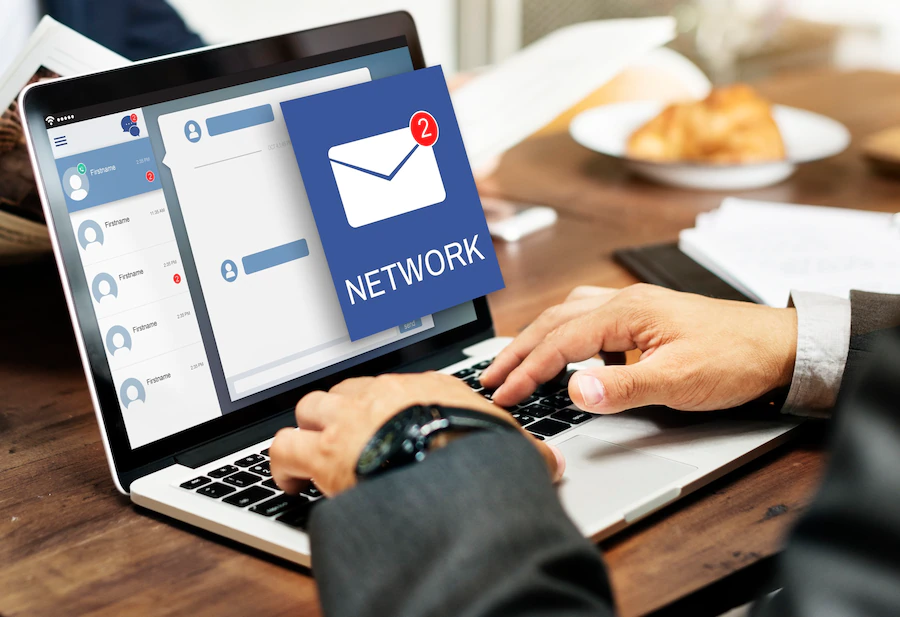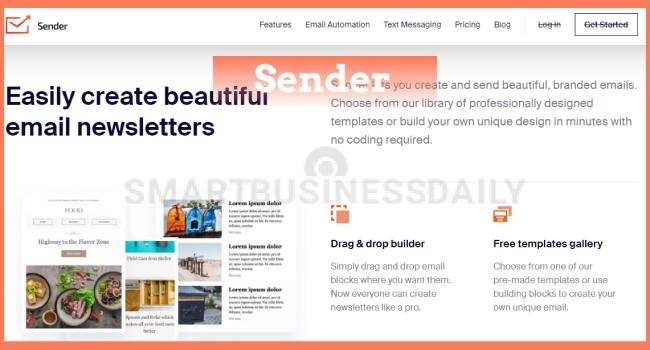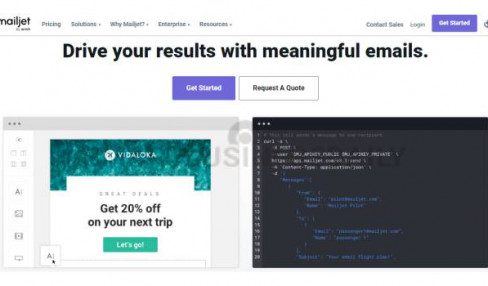Read Also:
Everything You Need To Know About Email Deliverability
9 Mins Read
Published on: 29 August 2023
Last Updated on: 16 September 2024

toc impalement
In the ever-evolving landscape of digital communication, email remains a vital tool for businesses and individuals alike. Email deliverability, however, is a critical aspect that often goes unnoticed. Ensuring that your emails reach their intended recipients’ inboxes can significantly impact the success of your email marketing campaigns. In this comprehensive guide, we’ll dive into the depths of email deliverability, covering key concepts, best practices, and troubleshooting tips.
Why Email Deliverability Matters
Email deliverability refers to the ability of an email to successfully arrive in a recipient’s inbox, avoiding spam folders or being rejected altogether. It’s a multifaceted process influenced by various technical, content-related, and engagement factors.
Email deliverability is crucial for successful email marketing. It ensures your emails reach recipients’ inboxes and aren’t marked as spam. This matters because it influences:
- Engagement: High deliverability means better audience reach and engagement.
- Reputation: Good deliverability builds the sender’s reputation and credibility.
- Metrics: Improved deliverability leads to higher open and click rates.
- Avoiding Filters: It helps your emails bypass spam filters.
- Trust: Consistent inbox placement fosters subscriber trust.
- Compliance: It aligns with email marketing regulations.
- Conversions: More inbox visibility increases conversions.
- Efficiency: It maximizes your marketing ROI.
- Personalization: Targeted emails matter when they’re seen.
- Branding: Consistent inboxing boosts brand visibility.
Services For Email Deliverability
The key point email markers should know about email deliverability services is that they are designed to optimize the chances of your emails successfully reaching recipients’ inboxes. These services focus on various aspects of email deliverability, including sender reputation, content analysis, list hygiene, authentication, and monitoring for potential issues. By utilizing these tools, businesses can proactively improve their sender reputation, enhance engagement rates, and ensure that their email campaigns are effective and impactful.
Key Features Of Email Deliverability Services
- Sender Reputation Monitoring: Tools track sender reputation metrics, helping you maintain a positive reputation with ISPs and ESPs.
- Content Analysis: These tools assess email content for spam triggers, ensuring your messages avoid being flagged.
- Blacklist Monitoring: Tools check if your domain or IP address is blacklisted, preventing deliverability disruptions.
- Authentication Management: Tools help implement and monitor authentication protocols to prevent unauthorized use of your domain.
- List Hygiene: These tools identify and remove invalid or inactive email addresses, maintaining list quality.
- Feedback Loop Setup: Some tools facilitate setting up feedback loops with ISPs to improve deliverability.
- Inbox Placement Testing: Tools allow you to test how your emails appear across various email clients and ISPs.
- Deliverability Reporting: Tools provide comprehensive reports on deliverability metrics for data-driven decisions.
There are specialized tools. All in all, the key things each email marketer should know about email deliverability ensure that your messages reach your audience, helping you achieve your communication goals. Whether you’re sending promotional offers, important updates, or transactional emails, a high deliverability rate increases the likelihood of engagement and conversions.
Factors Affecting Email Deliverability

Several factors can influence whether an email is successfully delivered or ends up in spam folders. Here are some key factors affecting email deliverability:
Sender Reputation
The reputation of the sender’s domain and IP address plays a pivotal role in email deliverability. Internet service providers (ISPs) evaluate the sender’s reputation to determine whether an email should be sent to the inbox or filtered as spam.
Content Quality And Relevance
Compelling and relevant content is more likely to bypass spam filters. Avoid using spam-triggering words, excessive capitalization, or misleading subject lines. Instead, focus on delivering value to your recipients.
Subscriber Engagement
ISPs consider how recipients interact with your emails. High engagement, such as opening emails, clicking links, and marking messages as “not spam,” signals to ISPs that your emails are wanted.
Authentication And Encryption
Implementing authentication mechanisms like SPF, DKIM, and DMARC helps verify the legitimacy of your emails, reducing the chances of phishing and spam.
Best Practices For Improving Email Deliverability: 12 Tips
By following these best practices, you can enhance your email deliverability and ensure that your messages reach the intended recipients’ inboxes rather than being lost in spam folders:
Building And Maintaining A Clean Email List
A clean and well-maintained email list is the base or foundation of successful email marketing. It ensures that your messages reach the right audience and contributes to higher engagement rates and better deliverability. Building and maintaining a clean email list requires a combination of effective list-building strategies, regular list hygiene practices, and adherence to industry regulations.
Crafting Compelling And Relevant Content
Crafting content that captivates your audience’s attention and resonates with their needs is a cornerstone of success. Compelling and relevant content encourages higher engagement rates and fosters lasting connections with your subscribers. To achieve this, you need to understand your audience, create valuable content, and deliver it in a format that grabs their interest.
Implementing Double Opt-In Processes
The double opt-in process is a method used in email marketing to confirm and validate a subscriber’s intent to receive emails from a particular sender. Unlike a single opt-in, where a user simply provides their email address to subscribe, the double opt-in process involves an additional step of confirming that subscription.
Implementing a double opt-in process is a powerful strategy to ensure your email list consists of engaged and genuinely interested subscribers. This process requires recipients to confirm their subscription by taking a deliberate action, such as clicking a verification link in a follow-up email. Double opt-in improves list quality and fosters better deliverability, engagement, and compliance with regulations.
Segmenting Your Audience
Segmenting your audience is a strategic approach in email marketing that involves dividing your subscribers into distinct groups based on shared characteristics, behaviors, or preferences. By creating targeted segments, you can tailor your email content to resonate with each group’s specific needs, interests, and expectations.
This personalized approach not only enhances engagement but also boosts conversion rates and strengthens the overall effectiveness of your email campaigns.
Choosing The Right Email Service Provider
Selecting the right Email Service Provider (ESP) is a crucial decision that can significantly impact your email deliverability and campaign success. With a plethora of options available, it’s important to consider various factors before making your choice. You are to consider the following parameters when choosing an ESP:
- Features and Capabilities: Assess the features offered by each ESP, including email templates, automation, A/B testing, segmentation, and integration with other tools.
- Ease of Use: Choose an ESP with an intuitive interface that aligns with your technical skills and the complexity of your campaigns.
- Scalability: Ensure the ESP can accommodate the growth of your subscriber list and the increasing demands of your email marketing efforts.
- Deliverability: Research the ESP’s deliverability rates and reputation within the industry to ensure your emails reach recipients’ inboxes.
- Customer Support: Opt for an ESP that offers reliable customer support to assist with technical issues, troubleshooting, and questions.
- Pricing: Compare pricing plans and ensure they align with your budget and the features you require.
- Integration: Check if the ESP integrates seamlessly with your existing tools, such as CRM software or e-commerce platforms.
Monitoring And Analyzing Deliverability Metrics
Monitoring and analyzing deliverability metrics is a crucial aspect of maintaining a successful email marketing campaign. These metrics provide insights into how well your emails are being received by recipients and help you identify areas for improvement. Let’s explore the key metrics to track and how to interpret them.
Key Deliverability Metrics
- Open Rate: The open rate indicates the percentile value of recipients who opened your email. A low open rate might suggest unengaging subject lines or content.
- Click-Through Rate (CTR): CTR measures the percentile value of recipients who clicked on a link within your email. A higher CTR indicates that your content is resonating with your audience.
- Bounce Rate: Bounces occur when an email is undeliverable. These soft bounces are generally transient issues, while hard bounces are generally long-term and permanent problems, such as an invalid email address.
- Unsubscribe Rate: This metric indicates the recipient percentage who opted out of receiving future emails. A high unsubscribe rate might signal irrelevant content or overzealous emailing.
- Spam Complaint Rate: The spam complaint rate reflects the recipient number who marked your email as spam. Consistently high spam complaints can harm your sender’s reputation.
- Delivery Rate: The delivery rate is the percentile figure of successfully delivered emails. It helps gauge how effectively your emails navigate spam filters.
Responsive Design For Various Devices
In today’s digital landscape, where people access emails from a multitude of devices with varying screen sizes, responsive design has become paramount for successful email marketing. Ensuring that your emails display correctly and function smoothly on all devices is essential for engaging your audience and maximizing your email deliverability.
Optimizing Load Times for Mobile Users
Optimizing the load times of your email content is crucial, especially for mobile users. Slow-loading emails can lead to frustration, decreased engagement, and even abandoned messages. To ensure a seamless experience for your recipients and maintain high deliverability rates, it’s essential to prioritize load time optimization.
Using Personalization Effectively
Personalization is a powerful tool in email marketing that can significantly enhance engagement and build stronger relationships with your audience. By tailoring your email content to individual recipients’ preferences, behaviors, and characteristics, you create a more relevant and compelling experience.
However, personalization goes beyond simply addressing someone by their first name. Let’s explore how to use personalization effectively to connect with your subscribers on a deeper level.
Crafting Engaging Subject Lines
The subject line of an email is your first and often only chance to make a strong impression and entice recipients to open your message. A well-crafted subject line can significantly impact open rates and the overall success of your email marketing campaign. The reason is that in a crowded inbox, a compelling subject line that stands out and grabs the recipient’s attention increases the likelihood of your email being opened.
Your subject line sets the tone for the email content. It provides a glimpse of what recipients can expect, influencing their decision to open or ignore the message. A well-crafted subject line can directly impact open rates. The more engaging it is, the more likely recipients are to open the email.
Providing Clear And Visible Unsubscribe Options
Transparency and respect for your recipients’ preferences are paramount. One essential aspect of this is ensuring that recipients can easily and effortlessly unsubscribe from your email communications. Providing clear and visible unsubscribe options not only aligns with ethical practices but also helps maintain a positive sender reputation and engagement levels.
Troubleshooting Common Deliverability Issues: Overview
Maintaining a high email deliverability rate requires vigilance and proactive management. Various factors can affect the successful delivery of your emails, and understanding how to troubleshoot common deliverability issues is essential for a successful email marketing campaign. Let’s explore some prevalent issues and strategies to address them effectively.
Dealing With Spam Filters
Navigating spam filters is a critical aspect of ensuring that your carefully crafted messages reach your recipients’ inboxes. Spam filters are designed to protect users from unwanted and potentially harmful content, but they can sometimes mistakenly flag legitimate emails as spam. Avoid common spam filter triggers and use spam-checking tools before sending emails. Ensure your subscribers whitelist your domain to minimize filtering issues.
Handling Bounces And Unsubscribes
Handling bounces and unsubscribes is a crucial aspect of maintaining a healthy email list and fostering positive relationships with your subscribers. Bounces occur when emails are undeliverable, while unsubscribes indicate that recipients no longer wish to receive your communications. Properly managing these actions is essential for maintaining sender reputation, compliance with regulations, and overall campaign effectiveness.
Addressing Blacklisting Concerns
Ensuring the deliverability of your messages is paramount. One crucial step in maintaining a positive sender reputation is to regularly monitor whether your domain or IP address has been blacklisted. Blacklisting occurs when your domain or IP is identified as a source of spam or malicious content, leading to your emails being flagged and potentially blocked by email service providers (ESPs) and internet service providers (ISPs). Proactively checking for blacklisting and taking swift corrective measures is vital for preserving your email reputation and campaign success.
Bottom Line
Email deliverability is more than just sending messages; it’s about ensuring your communications reach their intended recipients and foster engagement. By leveraging email deliverability services like Growbots, businesses can maintain a strong sender reputation, optimize content, ensure list quality, and authenticate. By following best practices, maintaining sender reputation, and adapting to technological advancements, you can optimize your email campaigns for success.


















Comments Are Closed For This Article